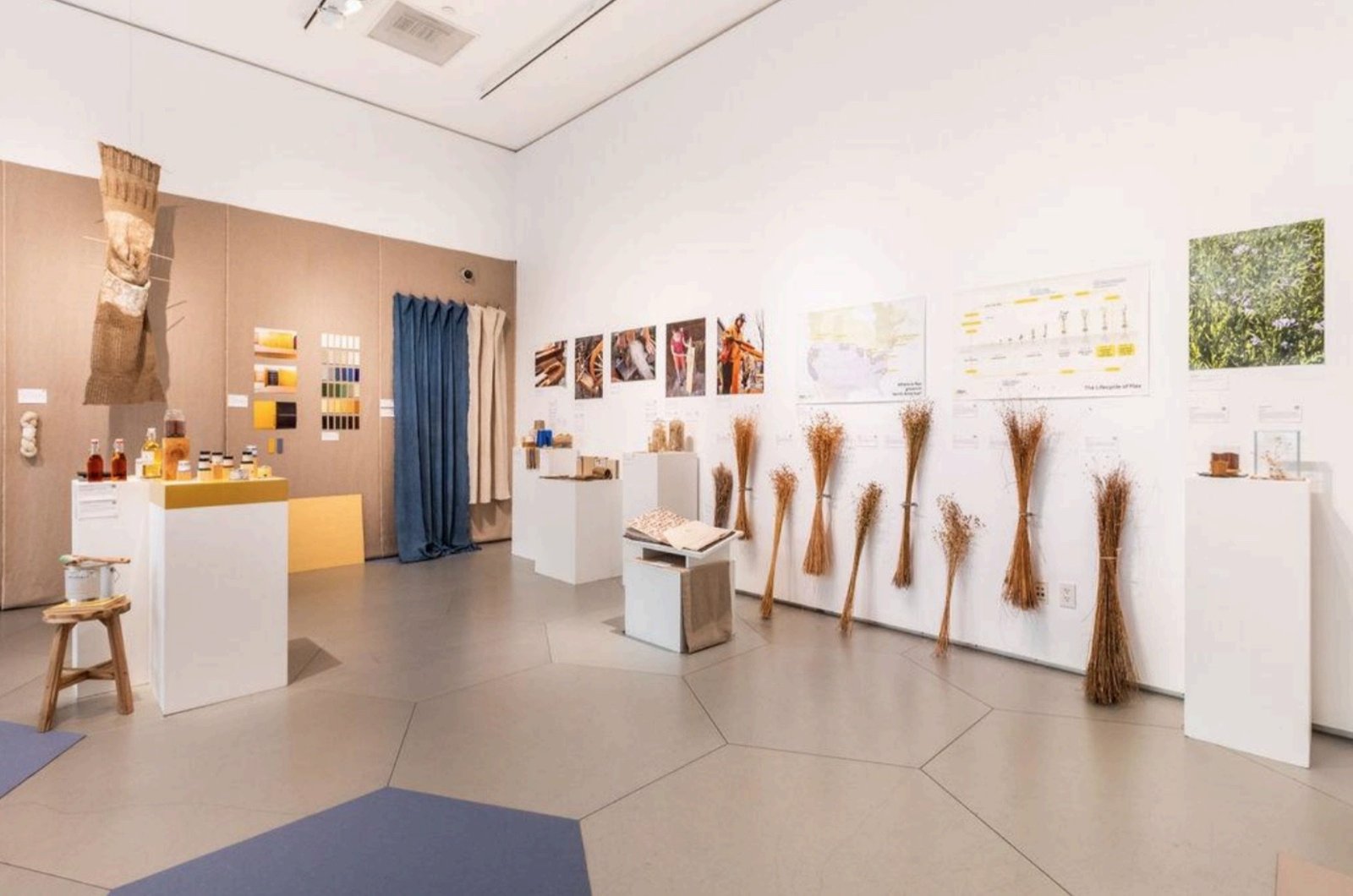
Super Plant: Parsons Showcases Flax’s Strength, Beauty, and Utility
Flax, the building block of ekoa®, and a highly renewable carbon-negative plant, can be used in many unusual ways. The Parsons Healthy Materials Lab, which is dedicated to reducing the use of toxics and carbon in the built environment, and driving a shift towards healthier, bio-based materials, highlighted the potential of flax at a recent exhibit, Regeneration of Flax. The Parsons team showcased how flax has contributed to human life in various innovative applications, both ancient and contemporary.
Flax has been grown on Earth for the last 36,000 years and has been used for millennia. Flax fiber is used to create linen fabrics, composites, and insulation. Flax seed, a nutritious food, can also be pressed into oils for finishes and is a primary component of linoleum flooring. And it’s beautiful.

Sustainability and Strength
From a sustainability standpoint, flax is a super plant: it has a very fast growing cycle, doesn’t require much water, is grown as a rotational crop, and sequesters carbon as it grows. The fibers that make up the stalks of the plant are composed of many layers, so they have great tensile strength. Flax is strong enough that Alexander the Great wore flax linen armor called linthorax, made from layers of linen soaked in flaxseed oil and hardened.
Due to the fibers’ innate strength and impact resistance, modern innovators have developed newer applications for the material, ranging from the aircraft and automotive industries to the built environment. Building materials benefit from flax’s high-performance characteristics, while the natural beauty adds an aesthetic value and a healthy biophilic connection.

Flax in Building Products
ekoa® flax-based wall protection was included in the exhibit as an example of a viable healthy alternative to petrochemical-based composite building materials. ekoa® can replace wood, plastics, and laminates in interior applications, and since it’s made of flax and plant resins, it’s a healthy, low-carbon product that delivers impressive durability and a higher strength-to-weight ratio than steel.
Other examples of building materials included ampliTex and FAAY. AmpiTex makes a composite fabric used for woven structures in sports, automotive, and construction, where the flax additionally contributes benefits of high vibration damping and UV resistance. FAAY, a partition and ceiling materials manufacturer in the Netherlands, displayed sections of their partition wall material made of a solid flax straw core, an option for prefabricated wall partitions in Europe.
Super Plant with Super Potential
We are honored that ekoa® was part of this exhibit. As Alison Mears, AIA, the Director of the Healthy Materials Lab said, “Architects and designers are searching for healthy alternatives to fossil fuel-based products and look to plants for biobased solutions. Flax is a super plant providing us with linseed oil for floors and paints, fiber for textiles, and a range of products from the flax stalk. The Regeneration exhibition at Parsons provides us with excellent examples of a range of innovative uses of flax.”
About The Healthy Materials Lab (HML). The HML is the design research lab at Parsons School of Design in New York City. HML is committed to raising awareness about toxic chemicals in building products and to creating resources for designers and architects to make healthier places for all people to live.
